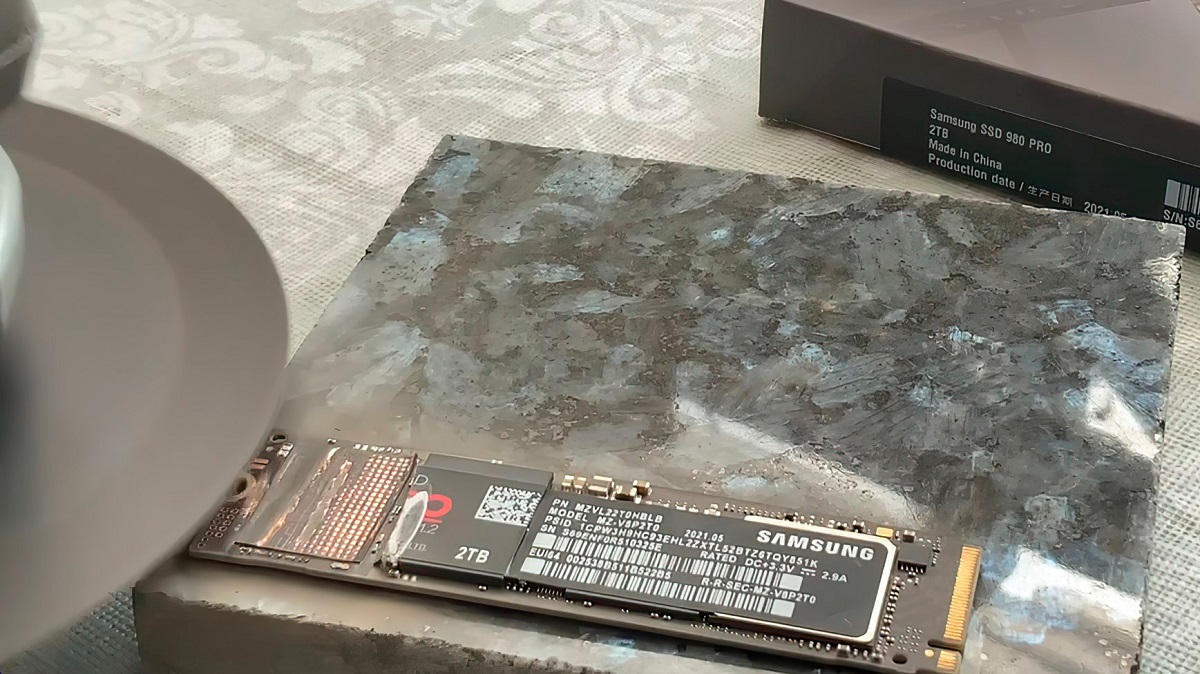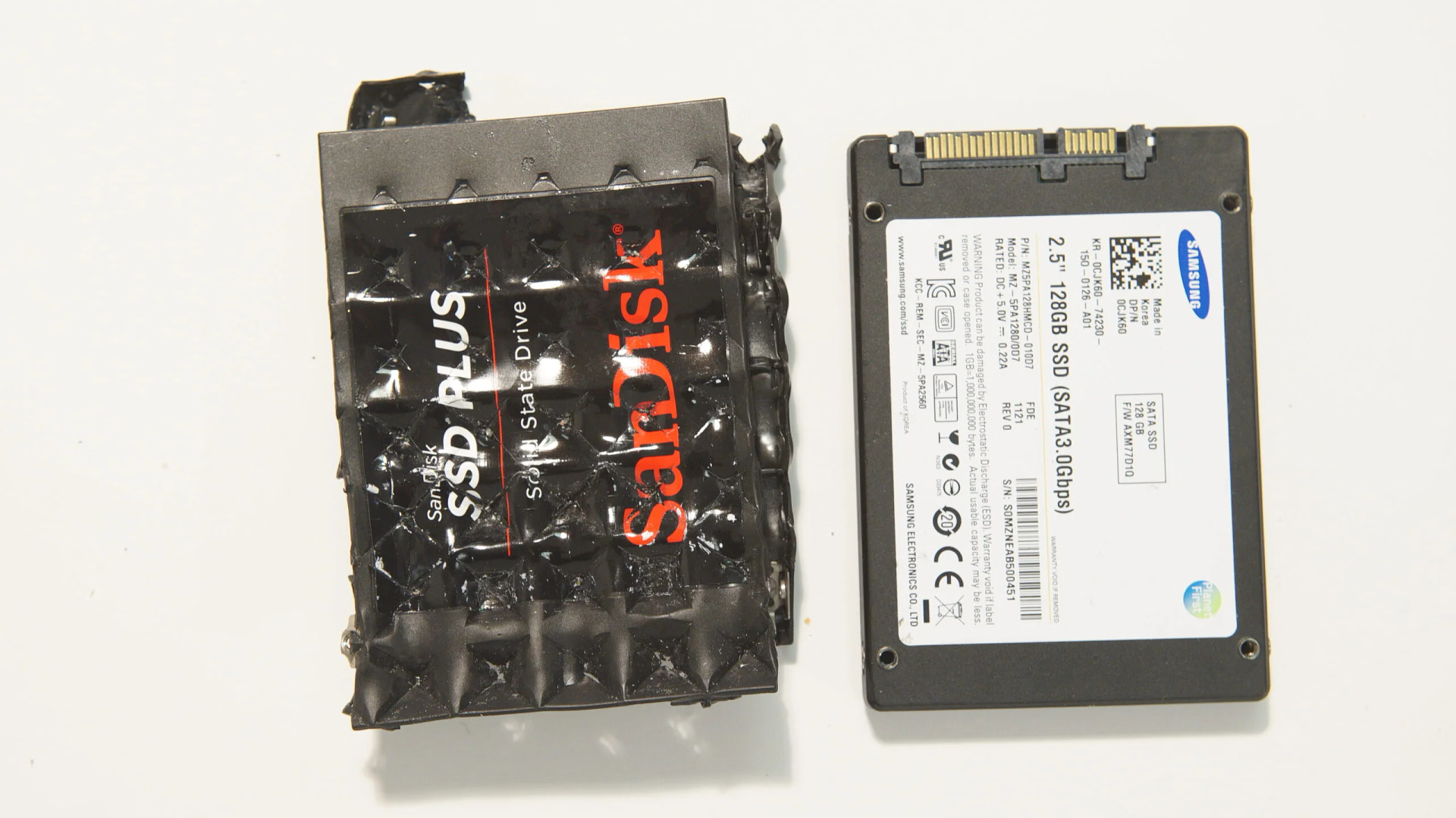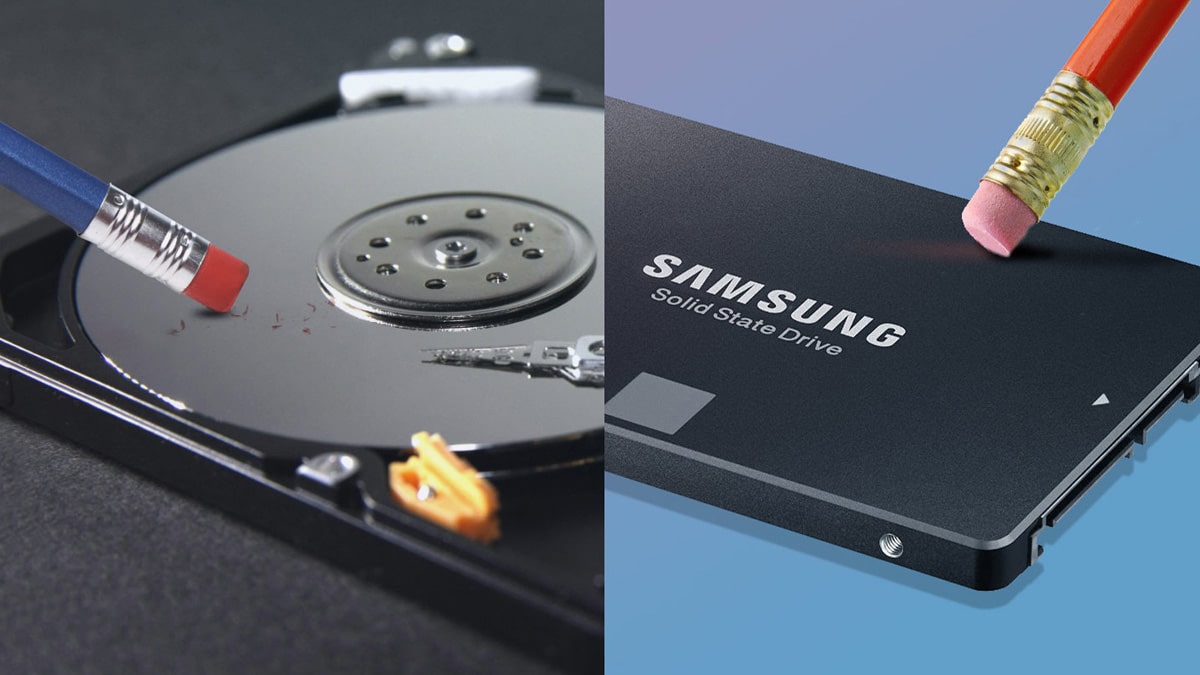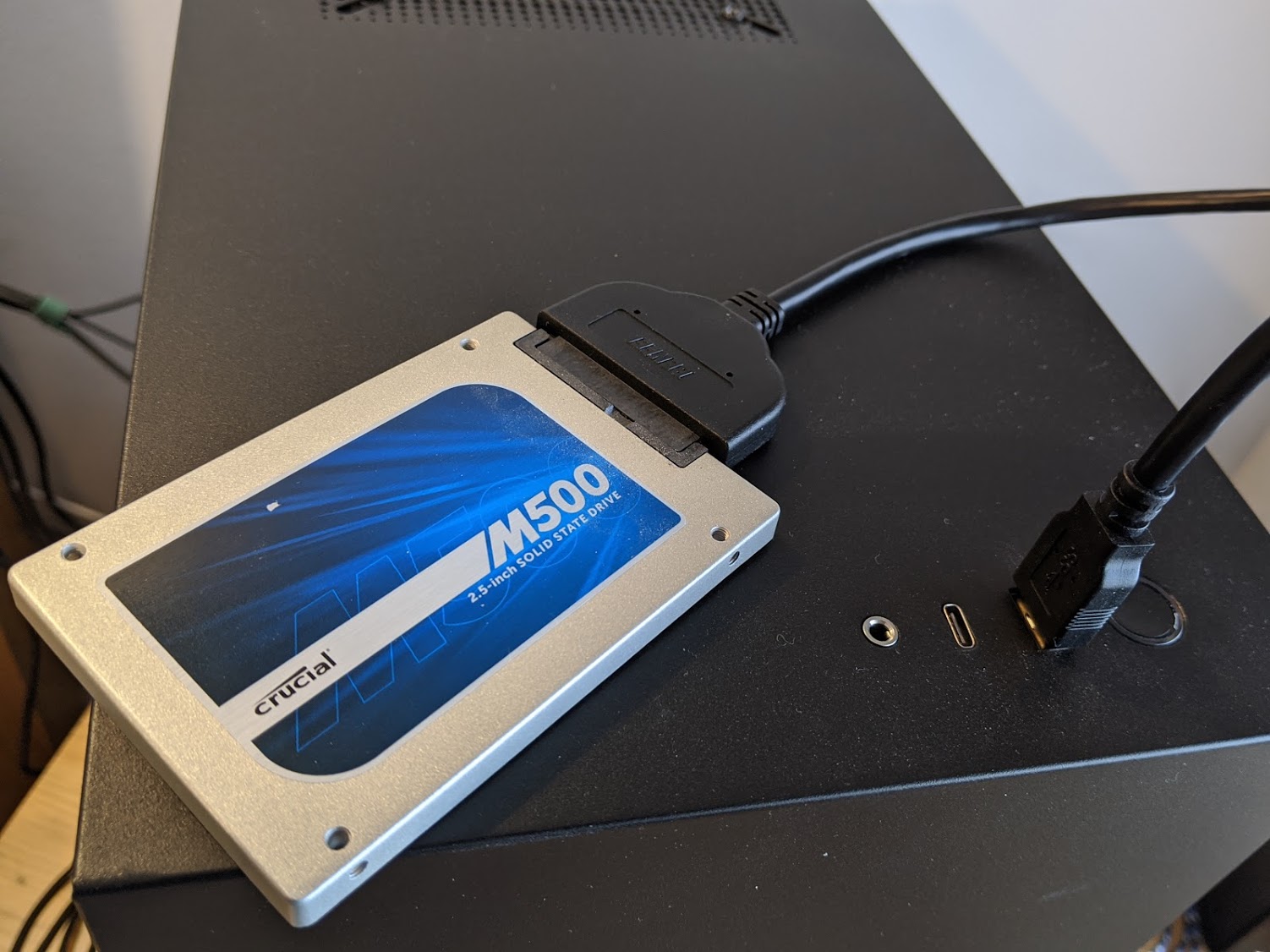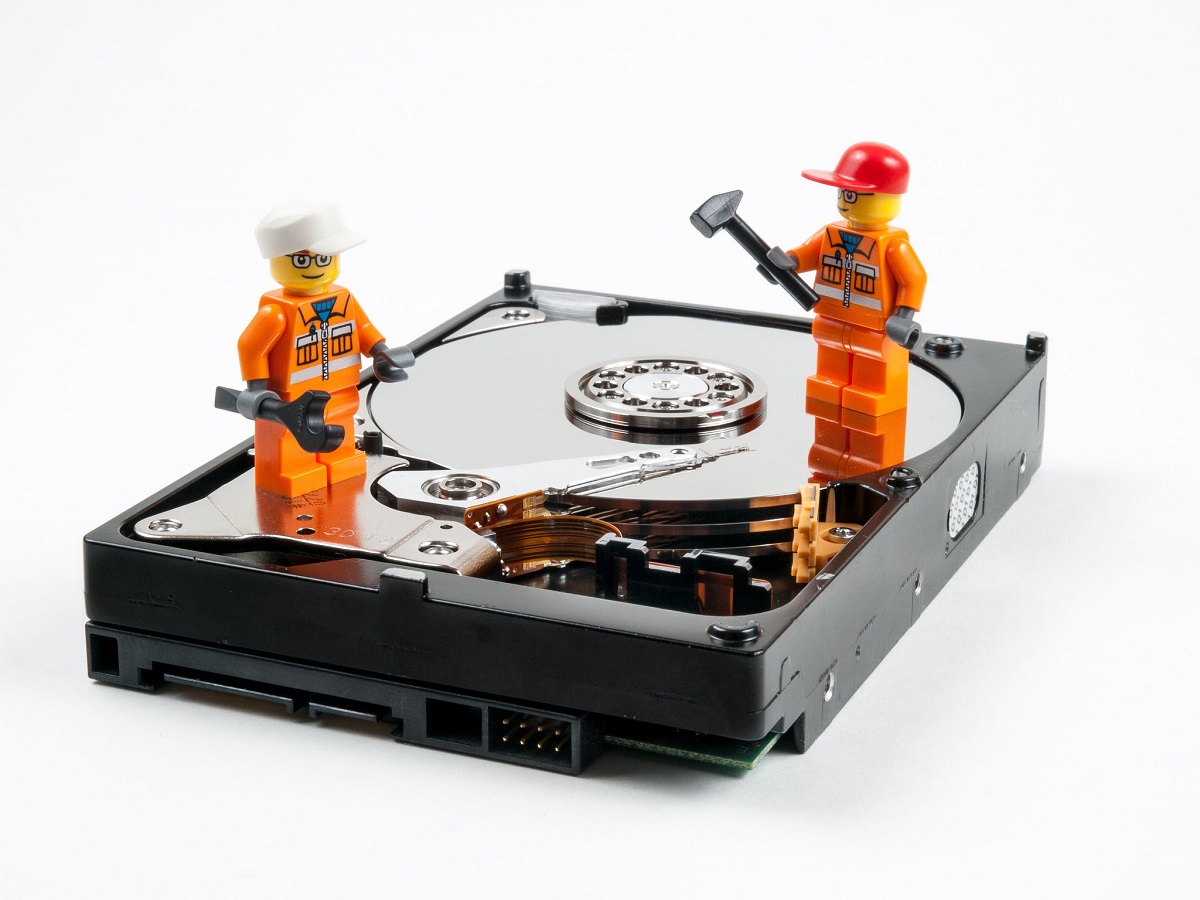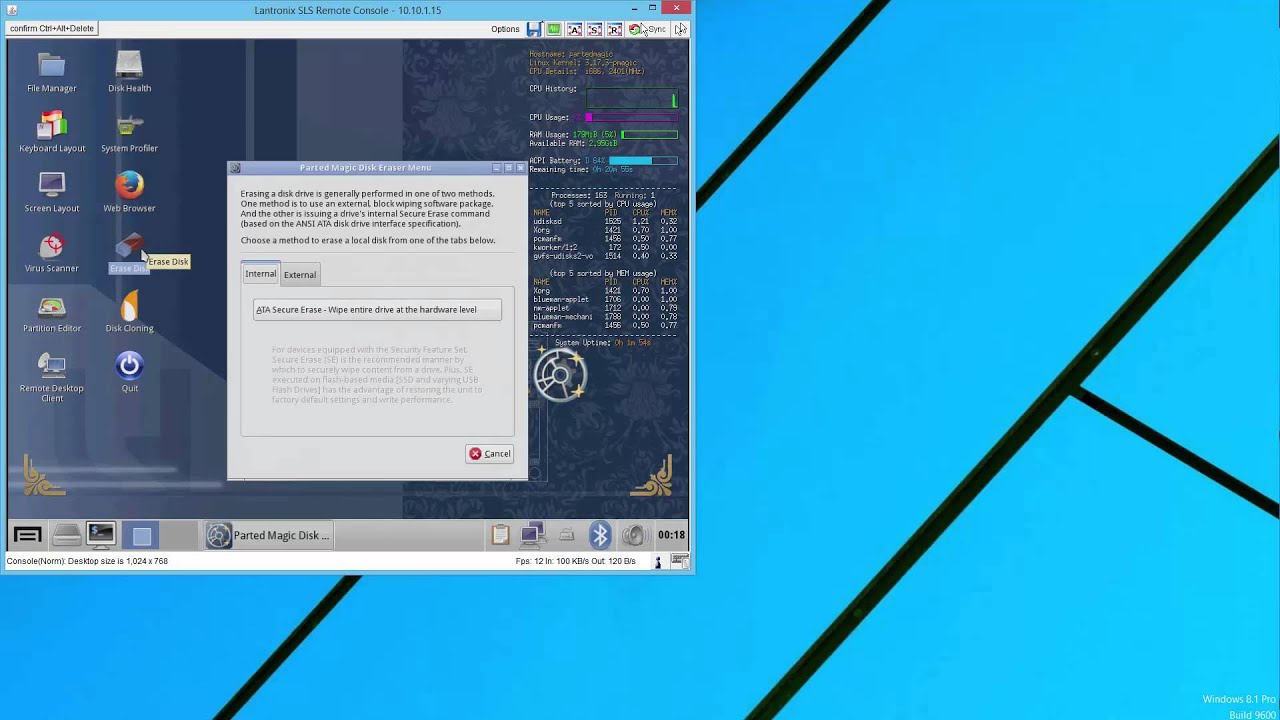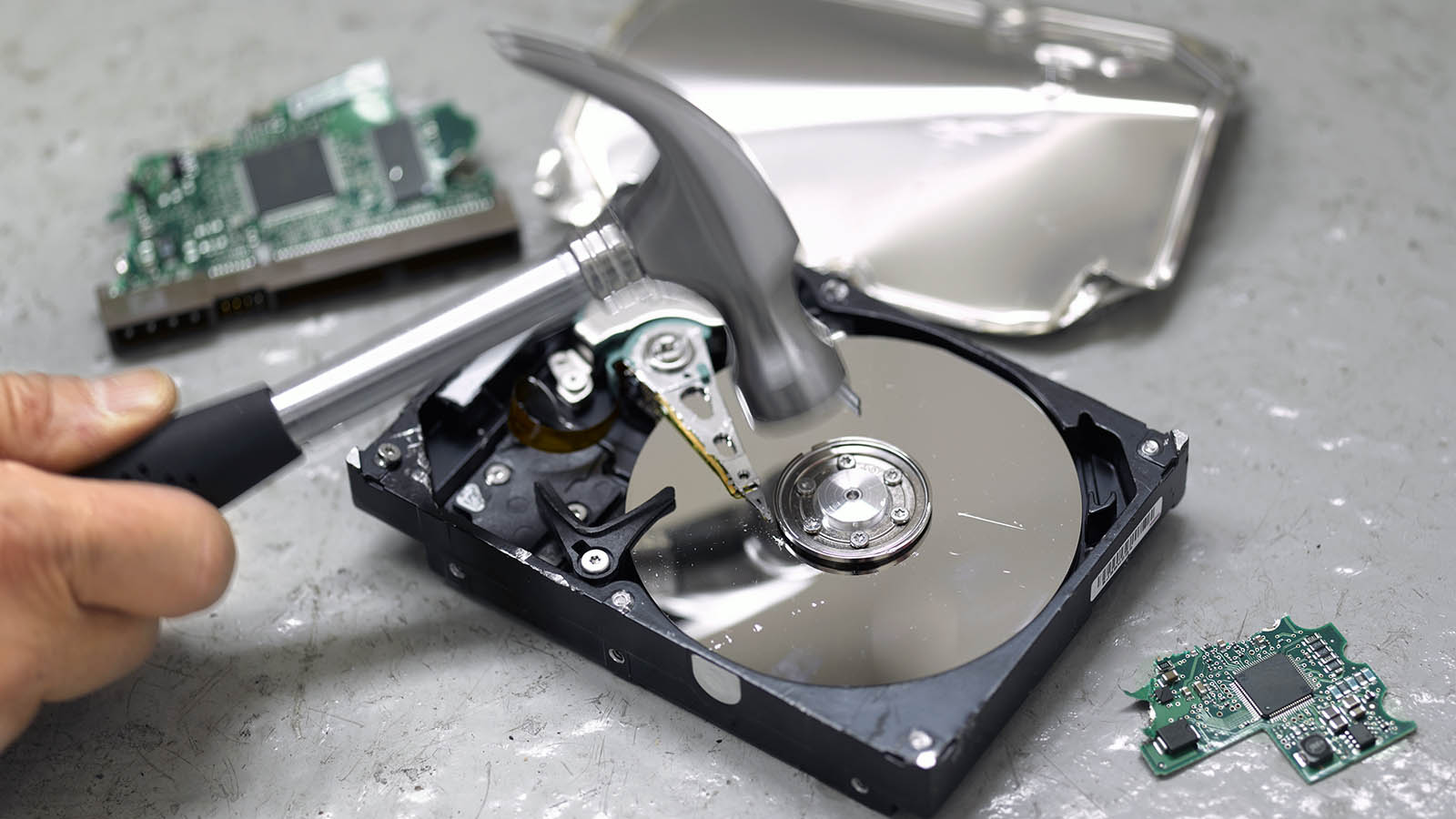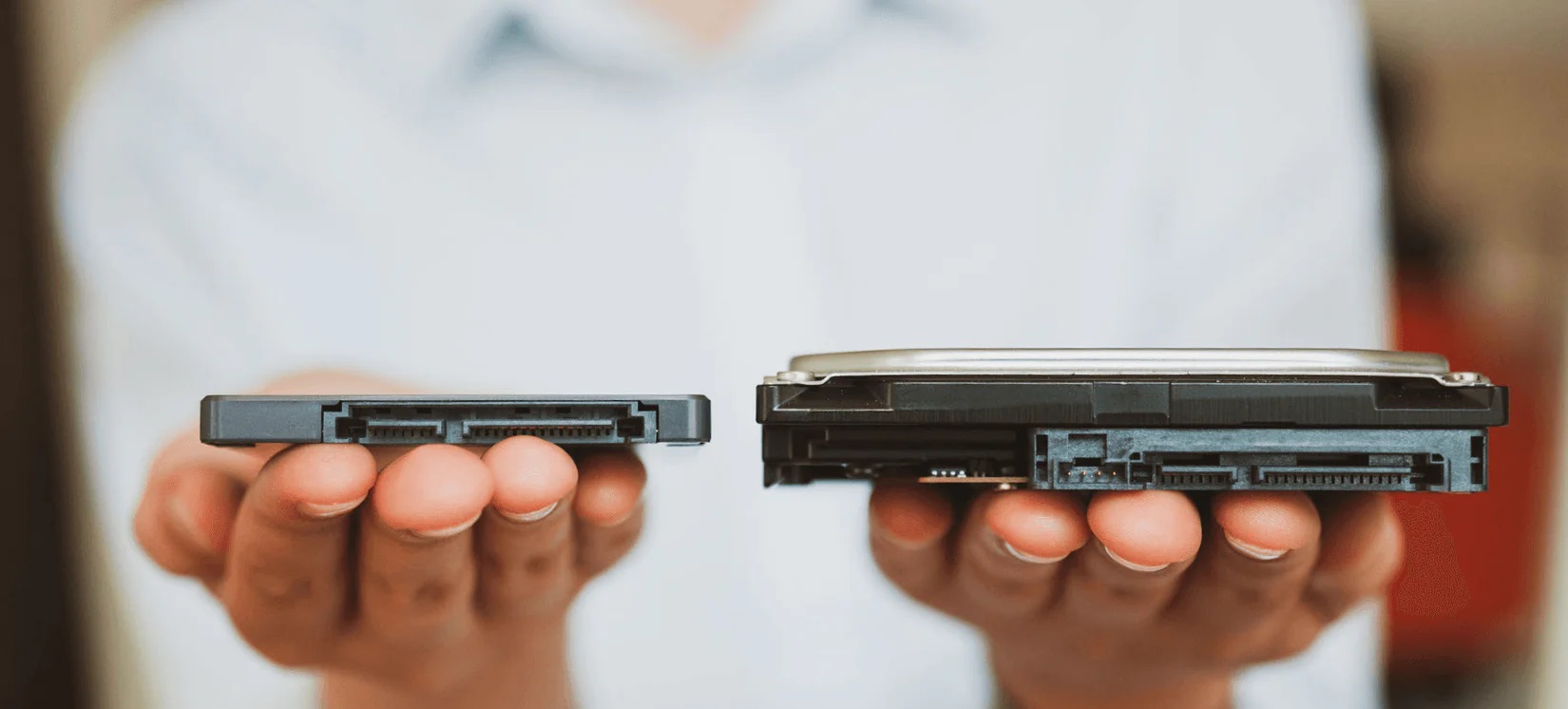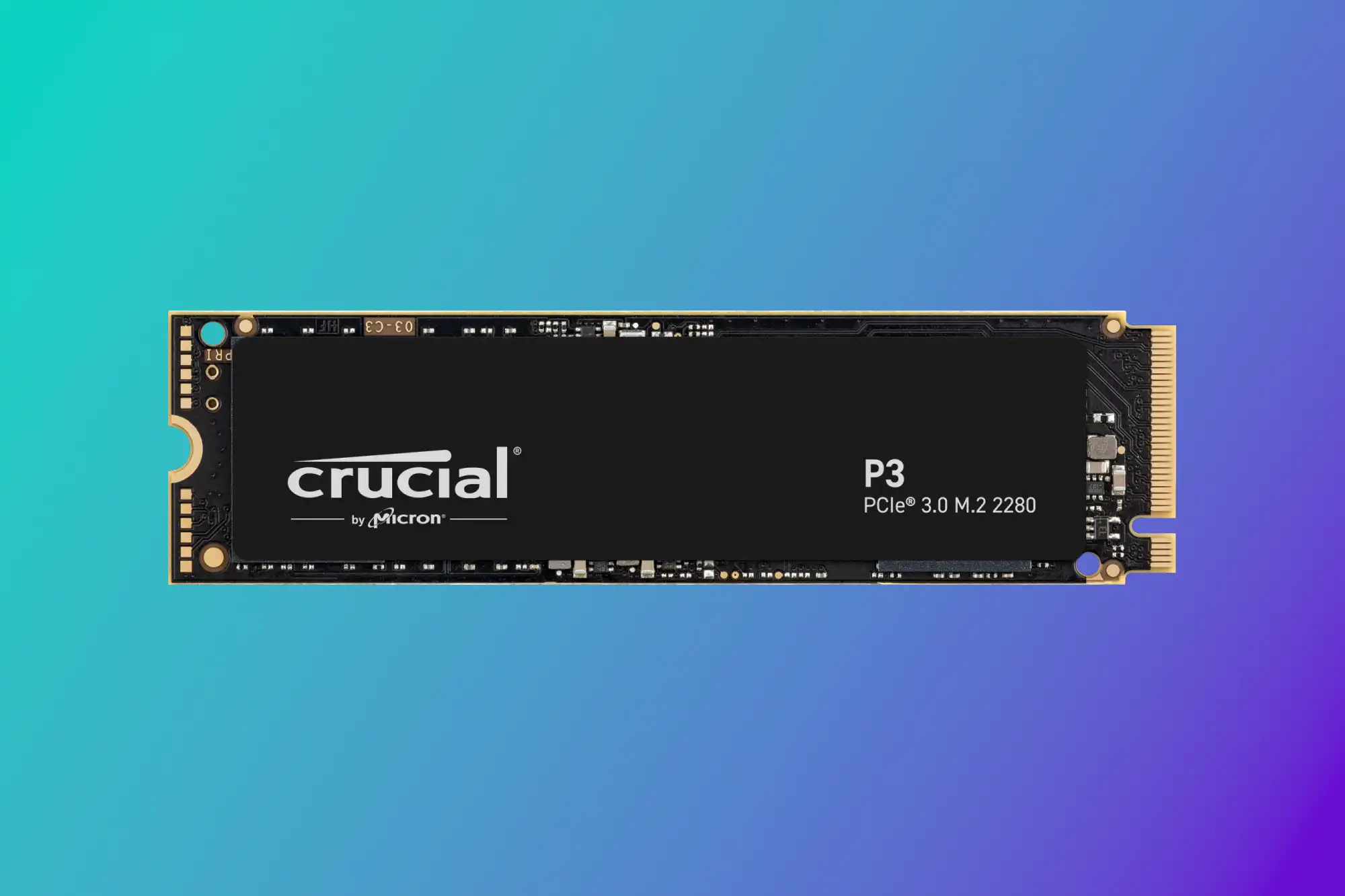Introduction
An SSD (Solid State Drive) is a data storage device that uses flash memory to store and retrieve data. It has become increasingly popular due to its faster data access times and improved overall performance compared to traditional hard disk drives. However, there may be situations where you need to destroy an SSD, such as disposing of a faulty or outdated device, or ensuring that sensitive data cannot be recovered.
Destroying an SSD is not as simple as physically destroying a hard disk drive, as SSDs do not have moving parts. They store data electronically, making it more challenging to ensure complete destruction and data security. In this article, we will explore various methods for destroying an SSD effectively and securely.
Before proceeding with any of the methods, it is crucial to remember that destroying an SSD will render it permanently unusable and irrecoverable. Therefore, ensure that you have backed up any important data and are prepared to lose all access to the drive. Additionally, follow proper safety precautions when handling electronic devices, and consider seeking professional assistance if required.
Why would you want to destroy an SSD?
There are several reasons why you might want to destroy an SSD:
- Data security: If you have sensitive information stored on your SSD and want to ensure that it cannot be recovered, destroying the drive is a reliable method. This is especially crucial when disposing of old or corporate SSDs that may contain classified or confidential data.
- Privacy concerns: If you are selling or donating your SSD, it is essential to erase all personal data to protect your privacy. Even if you have deleted files or formatted the drive, the data may still be recoverable. By properly destroying the SSD, you can eliminate any risk of unauthorized access to your personal information.
- End-of-life disposal: When an SSD reaches the end of its useful life or becomes defective, it is necessary to dispose of it properly. Rather than leaving it lying around, destroying the SSD ensures that it is permanently and safely disposed of, reducing the risk of data breaches and environmental contamination.
Regardless of the specific reason for destroying an SSD, it is crucial to understand the potential risks associated with improper disposal. Simply throwing away or selling a used SSD without erasing the data can lead to unauthorized access and misuse of personal information. By taking the time to destroy the SSD correctly, you can protect yourself, your data, and the environment.
Precautions to take
Destroying an SSD requires caution and adherence to safety guidelines. Here are some precautions to consider:
- Data backup: Before destroying an SSD, ensure that all important data is backed up to another secure location. This will prevent any loss of crucial files or information.
- Proper handling: Handle the SSD with care to prevent any physical damage or injury. Use anti-static precautions to avoid static discharge that could harm the drive’s components.
- Safety equipment: Wear protective gloves and safety goggles when using any tools or equipment during the destruction process. Safety should always be a top priority.
- Environment: Choose a suitable location for the destruction process, considering factors such as ventilation and privacy. Ensure that you are following any local regulations or guidelines for the disposal of electronic devices.
- Professional assistance: If you are unsure or uncomfortable with the destruction process, consider seeking professional help. Professional data destruction services have the experience and resources necessary to ensure secure and proper disposal.
By taking these precautions, you can minimize the risks associated with destroying an SSD and ensure that the process is carried out safely and effectively. It is essential to prioritize both personal safety and data security throughout the destruction process.
Method 1: Physical destruction
Physically destroying an SSD is one of the most straightforward methods for ensuring data destruction. Since SSDs do not have moving parts, the focus is on damaging the electronic components. Here are a few methods of physical destruction:
- Shredding: Industrial shredders designed for e-waste disposal can effectively shred an SSD into small, irreparable pieces. This method ensures that the data chips and other electronic components are completely destroyed.
- Drilling: Using a drill to create multiple holes through the SSD is another way to physically destroy it. Aim to penetrate the memory chips and circuitry to render them unreadable and unrecoverable.
- Hammering: Striking the SSD with a hammer or similar heavy object can damage the components beyond repair. This method requires precision and enough force to disable the storage chips and other vital parts.
When using any of these physical destruction methods, ensure that you are wearing proper protective gear and conducting the process in a controlled environment. It is also important to understand that physically destroying an SSD will make it permanently unusable and void any warranty.
Keep in mind that depending on your location, there may be regulations regarding the disposal of electronic devices. It is advisable to check with your local authorities or seek professional assistance if you are unsure about the proper procedures or legal requirements.
Method 2: Secure data wiping
If you want to destroy an SSD while keeping it intact, secure data wiping is an effective method. The goal is to overwrite the entire SSD with random data, making the original information irrecoverable. Here are a few secure data wiping methods:
- Manufacturer’s secure erase utility: Many SSD manufacturers provide specialized software tools or firmware that allow you to perform a secure erase. These utilities ensure that all data stored on the SSD is overwritten with random data, effectively erasing the original content.
- Third-party data wiping software: There are several reputable third-party data wiping software options available. These programs offer advanced algorithms to overwrite data multiple times, making it virtually impossible to recover the original information.
- Encryption and key disposal: If your SSD supports encryption, you can encrypt the data stored on the drive and securely dispose of the encryption keys. Without the proper keys, the data becomes unreadable and inaccessible.
It is important to note that when using secure data wiping methods, the efficiency and effectiveness may vary depending on the SSD model and firmware. It is recommended to follow the manufacturer’s guidelines or consult their support documentation for specific instructions on secure data wiping.
Always ensure that you have made a backup of any important data before performing a secure data wipe, as it will render the SSD completely empty and inaccessible. Additionally, consider securely erasing any backups or copies of the data to ensure complete data destruction.
Remember, secure data wiping is the preferred method when you want to destroy an SSD while preserving its physical integrity. This method allows for the potential reuse or resale of the drive, while ensuring that your personal or sensitive information cannot be recovered.
Method 3: Electromagnetic pulse (EMP)
Using an electromagnetic pulse (EMP) is a highly effective method for destroying an SSD. An EMP generates a strong electromagnetic field that can disrupt or destroy electronic components, rendering the SSD unreadable and irrecoverable. However, it is important to note that generating a powerful EMP requires specialized equipment and expertise. Here’s an overview of the process:
- EMP generator: An EMP generator is a device that generates a high-intensity electromagnetic pulse. These devices are typically powerful and can affect a wide range of electronic equipment, including SSDs.
- Shielding: Before generating the EMP, it is critical to ensure that the surrounding area is properly shielded. This prevents unintended damage to nearby electronic devices and ensures safety.
- Proximity: The SSD should be placed in close proximity to the EMP generator to maximize the impact of the pulse. This helps ensure that the electronic components of the SSD are sufficiently disrupted or destroyed.
- Power level: The power level of the EMP generator should be adjusted based on the desired destruction level. It is crucial to follow proper guidelines and regulations to prevent any harm or damage.
Generating an EMP is a complex process that requires expertise and specialized equipment. It is not recommended for inexperienced individuals to attempt this method on their own, as it can be dangerous and potentially cause unintended damage if not done properly.
Furthermore, it is important to adhere to any legal restrictions or regulations regarding the use of EMPs. In some jurisdictions, the use of EMPs may be heavily regulated or prohibited due to potential risks and hazards.
It is advisable to consult with professionals who have experience in generating EMPs or seek professional data destruction services that utilize this method. They can ensure the proper and safe destruction of your SSD using an electromagnetic pulse.
Method 4: Temperature extremes
Subjecting an SSD to extreme temperatures is another method to effectively destroy it. While SSDs are designed to operate within certain temperature ranges, exposing them to extreme heat or cold can damage the electronic components and render the SSD inoperable. Here are a few temperature-related methods for destroying an SSD:
- Extreme heat: Exposing the SSD to high temperatures, such as using a furnace or an open flame, can cause irreversible damage to the electronic components. The heat can melt or deform the circuitry, rendering the SSD unreadable and unusable.
- Extreme cold: Subjecting the SSD to extremely low temperatures, below its specified operating range, can also cause damage. The cold can make the electronic components brittle, leading to cracks or breakages that render the SSD inoperable.
- Thermal shock: Alternating between extreme heat and cold can induce thermal shock, causing rapid expansion and contraction of the SSD’s components. This can lead to cracking or other forms of damage that render the SSD irreparable.
It is important to note that extreme temperature methods should be carried out with caution and in a controlled environment. Safety precautions must be followed to prevent personal injury or property damage, such as utilizing proper protective gear and conducting the process in a well-ventilated area.
It is also worth mentioning that extreme temperature methods may have environmental implications. Ensure that you are compliant with any applicable regulations or guidelines regarding the responsible disposal of electronic devices and the handling of hazardous materials.
Ultimately, subjecting an SSD to temperature extremes can damage the electronic components and make the data stored on it irretrievable. However, it is essential to approach these methods with caution and ensure that safety guidelines and environmental considerations are taken into account.
Method 5: Overwriting with random data
Overwriting an SSD with random data is a secure and widely accepted method for destroying data and making it irrecoverable. This method involves replacing the existing data on the SSD with random bits, effectively erasing the original information. Here’s the process for overwriting an SSD with random data:
- Data wiping software: Use specialized data wiping software that can generate and write random data to every sector of the SSD. This process ensures that all previous data is overwritten and becomes unrecoverable.
- Multiple passes: It is recommended to perform multiple passes of random data over the SSD. Each pass further obscures the original data, making it extremely challenging or virtually impossible to recover.
- Certification standards: Verify that the data wiping software you choose meets recognized certification standards, such as the National Institute of Standards and Technology (NIST) guidelines. These standards ensure that the data wiping process is thorough and effective.
Overwriting an SSD with random data is a secure method as long as each sector is properly overwritten. This process effectively eliminates any traces of the original data, making recovery extremely unlikely. However, it is important to note that the efficiency of this method may depend on the specific SSD model and firmware.
Additionally, it is crucial to securely erase any backup copies of the data to ensure complete data destruction. Any remnants or duplicates of the original data can potentially be exploited or recovered.
Before proceeding with data overwriting, ensure that you have backed up any important data and are fully aware that the SSD will be permanently erased. Once the overwriting process is complete, the original data will be replaced with random bits, making it essentially unrecoverable.
Overall, overwriting an SSD with random data is a reliable and widely accepted method for destroying data and ensuring its irrecoverability.
Conclusion
Destroying an SSD is necessary to ensure the complete destruction and irrecoverability of the data stored on it. Whether you need to dispose of an old or faulty SSD or protect sensitive information, there are several effective methods to choose from.
Physical destruction methods such as shredding, drilling, or hammering can render the SSD permanently unusable. These methods focus on damaging the electronic components to the point where data recovery becomes impossible.
Secure data wiping through manufacturer utilities, third-party software, or encryption and key disposal is another reliable method. These methods overwrite the SSD with random data, making the original information untraceable and unrecoverable.
Using an electromagnetic pulse (EMP) can effectively destroy an SSD by interrupting or damaging its electronic components. However, generating a powerful EMP requires specialized equipment and expertise.
Subjecting an SSD to extreme temperatures, either extreme heat or extreme cold, can also render it unusable. The electronic components can be damaged, making the stored data irretrievable.
Overwriting an SSD with random data using specialized software is a secure and widely accepted method of data destruction. By replacing the original data with random bits, the information becomes virtually unrecoverable.
When destroying an SSD, it is crucial to follow safety precautions, consider environmental implications, and comply with any legal regulations. Remember to back up important data, handle the SSD with care, and seek professional assistance if necessary.
By choosing the appropriate method to destroy an SSD, you can ensure that sensitive information is safeguarded, comply with data privacy regulations, and minimize the risk of unauthorized access to your personal or confidential data.







